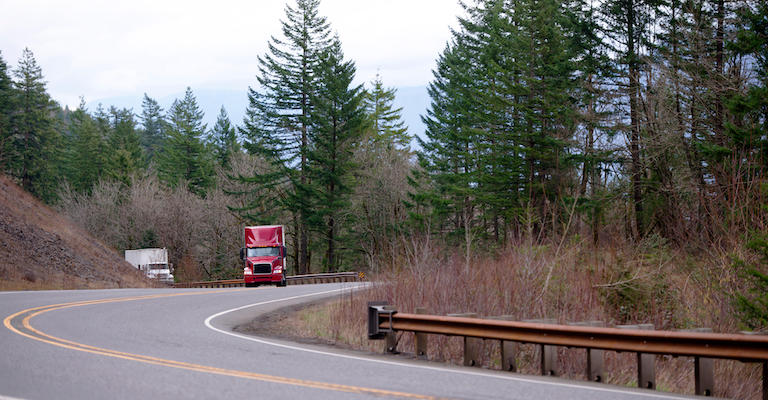Electric Truck Hydropower—Gravity Can Be Our Friend
A novel and flexible solution to generating hydropower in mountainous regions.
March 11, 2022

Hydropower is a well-proven method of generating near-zero-emission electricity, particularly in mountainous regions. Conventional hydropower methods rely on two connected reservoirs that sit at different levels and where the potential energy of the water is converted into electricity as the water moves downhill through a water turbine and electrical generator system.
The problem with reservoir hydro systems is that the storage reservoirs require significant space which can have environmental and social impacts. IIASA researcher Julian Hunt and an international team of researchers developed a new technology called Electric Truck Hydropower that could become a key method for electricity generation in steep mountainous regions.
Mountain regions have a large potential for hydropower that cannot be harnessed effectively by conventional technologies. Julian Hunt, a researcher at The International Institute for Applied Systems Analysis (IIASA), and an international team have developed a strange yet innovative hydropower technology based on electric trucks that could provide a flexible and clean solution for electricity generation in mountainous regions. The International Institute for Applied Systems Analysis (IIASA) is an independent international research institute with National Member Organizations in Africa, the Americas, Asia, and Europe. The results of the study have been published in the journal Energy.

Regenerative Braking is the Key
The Electric Truck Hydropower concept uses an existing road infrastructure to transport water down the mountain in trucks that contain water containers. Applying the regenerative brakes of the electric truck turns the potential energy of the water into electricity that charges the truck's battery. A portion of the generated energy could then be sold to the grid or used by the truck itself to transport other goods. The empty truck could then be driven back up the mountain for another load of water.
“The ideal system configuration is in mountainous regions with steep roads, where the same electric trucks can be used to generate hydroelectric power from different locations. This increases the chances that water will be available,” said Hunt in an IIASA news release.
According to the IISA, the proposed technology is an innovative, clean source of electricity that is competitive with solar, wind, and conventional hydropower. Cost estimates show that the levelized cost of Electric Truck Hydropower is $30-100 per megawatt-hour (MWh), which is considerably cheaper than conventional hydropower at $50-200 per MWh.
The environmental impacts of Electric Truck Hydropower also promise to be significantly less than those of conventional hydropower. “This technology does not require dams, reservoirs, or tunnels, and it does not disrupt the natural flow of the river and fish passage,” said Hunt. “The system requires only roads, which already exist, charging and discharging stations similar to small car parks, a battery facility connected to the grid, and the trucks.”
The research team estimated that Electric Truck Hydropower could generate 1.2 petawatt-hours (PWh) electricity per year, which is equivalent to about 4 percent of global energy consumption in 2019. A petawatt-hour (PWh) is equal to 1,000 megawatt-hours (MWh). The technology could harness the previously untapped potential for hydropower on steep mountain ranges—The regions with the highest potential are the Himalayas and the Andes.
“It is an interesting electricity generation alternative due to its high flexibility,” said Hunt. “For example, if a country is in an energy crisis, it can buy several electric trucks to generate hydropower. Once the crisis is over, the trucks can be used to transport cargo.”
Kevin Clemens is a Senior Editor with Battery Technology.
About the Author(s)
You May Also Like





